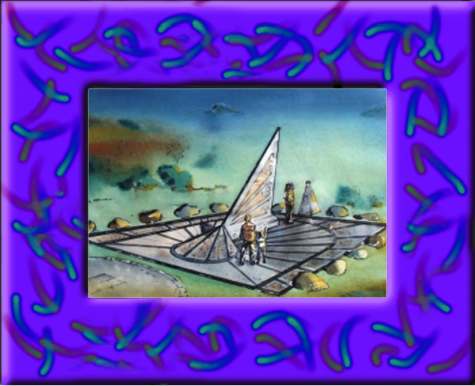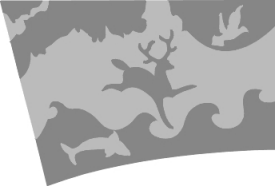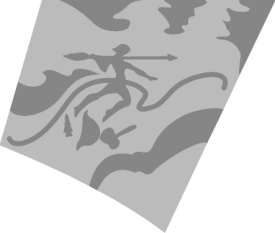
| Visit
the Park. |
 |
|
 |
First
Peoples: Introduction of New Technologies About
2,000 years ago, the local population greatly
increased. The need to exploit every food
resource prompted the introduction of new
technologies. First came the canoe and the bow
and arrow, which increased fishing and hunting
efficiency. Wild rice was also gathered. Cooking
capability was improved by the development of
ceramic pots made from riverbank clay. Before
hardening them on a fire, the women inscribed the
pots with elegant patterns. Today, fragments of
such pots are found at the local archaeological
sites. The form of decoration enables the pots to
be dated. Such technologies persisted up to the
coming of the Europeans.
|
|
| Wildlife The eastern
boreal landscape is comprised of lakes, rivers
and wetlands, evergreen and mixed forests, and
rugged granite outcrops. Such diversity of
landscape has naturally attracted a whole host of
fauna; from omnivores to fishes and birds. Humans
have also been attracted to the region for access
to these prime hunting, fishing and fur-bearing
grounds. Today, the landscape is even more
diverse under the impact of small communities,
highways, transmission lines and access trails.
The region still boasts the ancient lake
sturgeon, but no longer supports the black-tailed
deer, which has been replace by its more
successful competitor, the white-tailed deer. It
is this species that everyone in Pinawa sees
sooner or later.
|
 |
|
 |
Whiteshell
Provincial Park Look
across the river and you will see the
north-western reaches of the Whiteshell
Provincial Park. This 272,090-hectare natural
park was first opened up to the cottagers about
1920. They built their cottages on the lakes
closest to the rail lines that served them, such
as West Hawk, Brereton and Falcon. After a
jurisdictional transfer the Dominion of Canada to
the Province of Manitoba in 1930, the area became
a forest reserve in 1931 and finally a provincial
park thirty years later in 1961. While the park
is alive with individual lakes and rivers, it is
most known for straddling one of Canada’s
magnificent waterways: the Winnipeg River, which
bulges to form numerous lakes along its journey
from Lake of the Woods to Lake Winnipeg. Today,
the park offers visitors a wide variety of
year-round recreational pursuits ranging from
canoeing, swimming and hiking in summer and
cross-country skiing, ice fishing and
snowmobiling in winter to name just a few.
|
|
| First
Peoples: Introduction of Stone Tools As the
ancient Lake Agassiz receded, the first Native
people entered the region about 9,000 years ago,
using the emerging network of lakes and rivers.
Of interest to these hunters and gatherers were
the flourishing herds of caribou and bison.
Evidence of these first peoples is to be found in
the numerous archaeological sites located close
to Pinawa. These contain projectile points
chipped from stone. Such points were attached to
spears, used for hunting. Early spears were
large, used in a thrusting mode at close
quarters. Later these spears were smaller and
were thrown with the leveraged power of a
throwing stick, called an "atlatl".
|
 |
|










